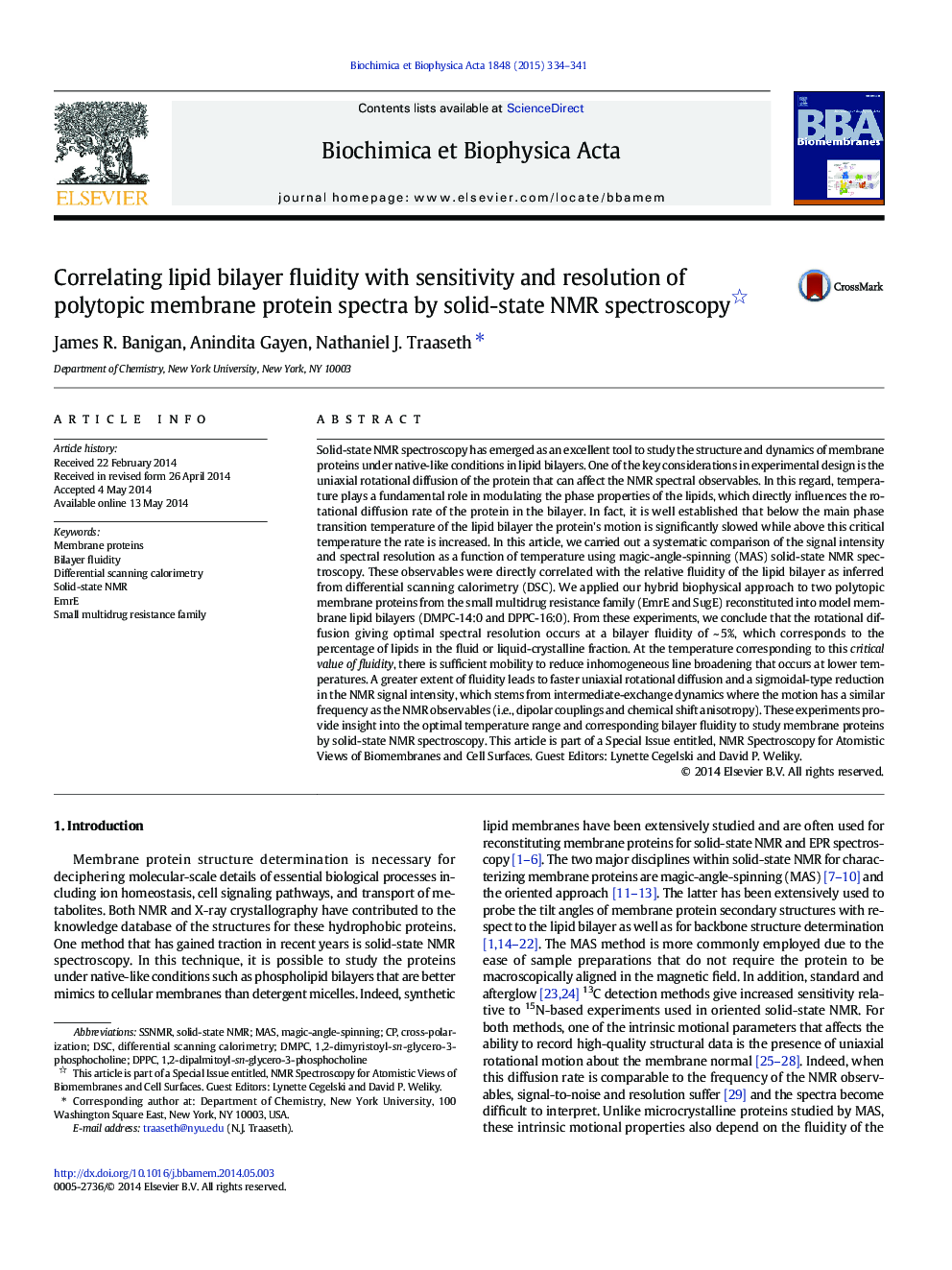| کد مقاله | کد نشریه | سال انتشار | مقاله انگلیسی | نسخه تمام متن |
|---|---|---|---|---|
| 1944060 | 1053175 | 2015 | 8 صفحه PDF | دانلود رایگان |

• NMR investigation of temperature effects for membrane proteins in lipid bilayers.
• Solid-state NMR membrane protein spectra were correlated to lipid bilayer fluidity.
• Optimal NMR spectral resolution was found ~ 15 °C below bilayer melting.
• Broad MAS spectra persisted above bilayer melting temperature (intermediate regime).
Solid-state NMR spectroscopy has emerged as an excellent tool to study the structure and dynamics of membrane proteins under native-like conditions in lipid bilayers. One of the key considerations in experimental design is the uniaxial rotational diffusion of the protein that can affect the NMR spectral observables. In this regard, temperature plays a fundamental role in modulating the phase properties of the lipids, which directly influences the rotational diffusion rate of the protein in the bilayer. In fact, it is well established that below the main phase transition temperature of the lipid bilayer the protein's motion is significantly slowed while above this critical temperature the rate is increased. In this article, we carried out a systematic comparison of the signal intensity and spectral resolution as a function of temperature using magic-angle-spinning (MAS) solid-state NMR spectroscopy. These observables were directly correlated with the relative fluidity of the lipid bilayer as inferred from differential scanning calorimetry (DSC). We applied our hybrid biophysical approach to two polytopic membrane proteins from the small multidrug resistance family (EmrE and SugE) reconstituted into model membrane lipid bilayers (DMPC-14:0 and DPPC-16:0). From these experiments, we conclude that the rotational diffusion giving optimal spectral resolution occurs at a bilayer fluidity of ~ 5%, which corresponds to the percentage of lipids in the fluid or liquid-crystalline fraction. At the temperature corresponding to this critical value of fluidity, there is sufficient mobility to reduce inhomogeneous line broadening that occurs at lower temperatures. A greater extent of fluidity leads to faster uniaxial rotational diffusion and a sigmoidal-type reduction in the NMR signal intensity, which stems from intermediate-exchange dynamics where the motion has a similar frequency as the NMR observables (i.e., dipolar couplings and chemical shift anisotropy). These experiments provide insight into the optimal temperature range and corresponding bilayer fluidity to study membrane proteins by solid-state NMR spectroscopy. This article is part of a Special Issue entitled, NMR Spectroscopy for Atomistic Views of Biomembranes and Cell Surfaces. Guest Editors: Lynette Cegelski and David P. Weliky.
Figure optionsDownload high-quality image (162 K)Download as PowerPoint slide
Journal: Biochimica et Biophysica Acta (BBA) - Biomembranes - Volume 1848, Issue 1, Part B, January 2015, Pages 334–341